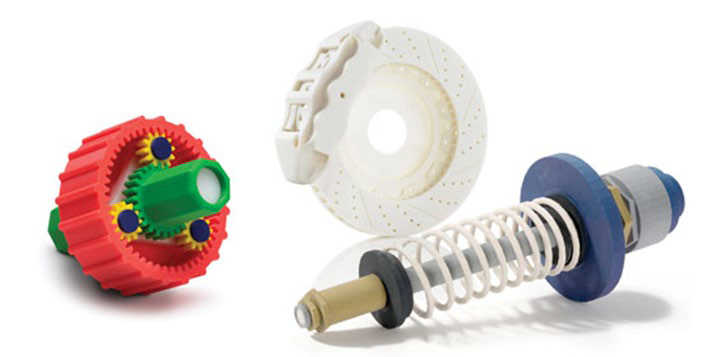Tech Briefs
Savannah River National Laboratory
Additive Manufacturing Unique Serialization
Researchers at the Savannah River National Laboratory (SRNL) have developed a methodology to embed a unique serialization structure within an additive manufactured part.
Background
Current methods of identifying a unique part involve adding a unique serial number to the part. There are many reasons that manufactured parts receive a serial number. These enable traceability of a part throughout its lifecycle and insures the part is not a counterfeit. Labels and stamped codes can be removed or replicated. This provides a much higher level of confidence that the identifying code will remain unaltered on the part. This technique works on additive manufactured (AM) parts, also know as 3D printed parts.

At a glance
- Higher level of identifying
- Cannot remove or duplicate
- Protected from unintentional damage
- U. S. Patent 9,626,608 B2
How it works
AM machines have optimum processing parameters to produce the desired part. These parameters are based on the materials being used, part geometry, build technique, etc. Using these optimum parameters ensure consistent material properties throughout the part. Among these properties is density. In this technique, the processing parameters are temporarily set to a non-optimum configuration. The result is an area with what is traditionally considered non-ideal material properties, or porosity. Porosity is random and has features that are smaller than the machine can purposely print (machine resolution). This is important because if the features were not smaller than the resolution, it would be possible to print another part which duplicates the porosity. This porosity is the key to the unique fingerprint. The specifically located density variations and porosity becomes the unique fingerprint.
Using various non-destructive techniques such as x-ray or computed tomography (CT), this code can be examined. After a part is manufactured, it would be scanned to record the fingerprint details and that file would then be used as the master to compare future scans to identify and validate the authenticity of the part.
Stage of Development
This technology is in early stage research and development with ongoing testing and experimentation underway. This technology would be useful for government and commercial applications. Additive Manufacturing is a rapidly growing industry and is being used to manufacture a number of components. Possible end uses are firearms serial numbers, aircraft components, and NNSA weapons components. A patent has been filed with the U. S. Patent and Trademark Office.
Partnering Opportunities
SRNL invites interested companies with proven capabilities in this area of expertise to develop commercial applications for this process or product under a cooperative research and development agreement or licensing agreement. Companies interested in licensing will be requested to submit a business plan setting forth company qualifications, strategies, activities, and milestones for commercializing this invention. Qualifications should include past experience at bringing similar products to market, reasonable schedule for product launch, sufficient manufacturing capacity, established distribution networks, and evidence of sufficient financial resources for product development and launch.
Download Tech Brief
Contact Information
Savannah River National Laboratory
E-mail: partnerships@srnl.doe.gov